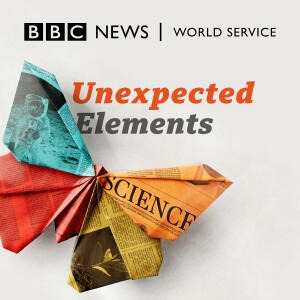
The first license of its kind has been granted for deep-sea mining. It will be used to run early tests to see whether the seabed could be good place to harvest rare earth materials in the future. These earth minerals are what powers much of our modern technology, and the demand is growing year on year.
The license raises ethical questions about whether anyone has ownership over the seabed, and whether we could be disrupting ecosystems under the sea in doing so. We have two experts joining us to discuss the scientific implications. They are marine biologist, Dr Helen Scales and Bramley Murton from the National Oceanographic Centre, Southampton University.
Also on the programme, we build on last week’s discussion about growing opportunities for researchers on the African continent. We look at how programmes of genomic sequencing are offering opportunities for Africa-based researchers, that haven’t been available before.
We talk to Thilo Kreuger, a PhD student at Curtin University, Western Australia, who’s behind the discovery of a whole new species of carnivorous plants. We discuss what it’s like fulfilling a lifelong dream to discover more about these spectacular plant species.
Crowdscience listener Alix has a burning question - what’s actually happening inside the flames of a campfire to make it glow? And why do some materials burn easily, while others refuse to light at all?
Why don’t some things burn? Alex Lathbridge travels to the Fire Research Centre at the University of Edinburgh to (safely) set various things ablaze. He learns about the fundamentals of fire and why things react differently to heat. He then heads to archives of the Royal Institution of London, to see an invention from the 19th century that can stop a fireball in its tracks: the miner’s safety lamp, which saved countless lives. And he speaks to a chemist about the science of flame retardants, and how even though they can make products less flammable, they may also have unintended consequences.
(Image: The Metals Company plans to mine the seafloor for these nodules containing nickel, cobalt, and manganese in the Clarion Clipperton Zone of the Pacific Ocean. (Carolyn Cole / Los Angeles Times via Getty Images)
view more
More Episodes
Covid- 19 – Good news on immunity
 2020-11-22
2020-11-22
 2020-11-22
2020-11-22
Covid-19 defeats US Marines
 2020-11-15
2020-11-15
 2020-11-15
2020-11-15
Coronavirus spreads from mink to humans
 2020-11-08
2020-11-08
 2020-11-08
2020-11-08
Osiris Rex stows asteroid material
 2020-11-01
2020-11-01
 2020-11-01
2020-11-01
Nasa probe Osiris Rex lands on asteroid
 2020-10-25
2020-10-25
 2020-10-25
2020-10-25
Covid -19 mortality
 2020-10-18
2020-10-18
 2020-10-18
2020-10-18
Do Covid–19 mutations matter?
 2020-10-11
2020-10-11
 2020-10-11
2020-10-11
Are children the biggest Covid-19 spreaders?
 2020-10-04
2020-10-04
 2020-10-04
2020-10-04
Malaria resistance breakthrough
 2020-09-20
2020-09-20
 2020-09-20
2020-09-20
Covid -19 science versus politics
 2020-09-13
2020-09-13
 2020-09-13
2020-09-13
Nyiragongo - is Goma under threat?
 2020-09-06
2020-09-06
 2020-09-06
2020-09-06
Covid-19 Therapy Controversy
 2020-08-29
2020-08-29
 2020-08-29
2020-08-29
Trouble in Greenland
 2020-08-23
2020-08-23
 2020-08-23
2020-08-23
Putin’s Covid-19 vaccine
 2020-08-16
2020-08-16
 2020-08-16
2020-08-16
NASA rover heads for Mars ancient lake
 2020-08-02
2020-08-02
 2020-08-02
2020-08-02
How long do Covid-19 antibodies last?
 2020-07-18
2020-07-18
 2020-07-18
2020-07-18
Rwanda’s game changing coronavirus test
 2020-07-11
2020-07-11
 2020-07-11
2020-07-11
012345678910111213141516171819
Create your
podcast in
minutes
- Full-featured podcast site
- Unlimited storage and bandwidth
- Comprehensive podcast stats
- Distribute to Apple Podcasts, Spotify, and more
- Make money with your podcast
It is Free
- Privacy Policy
- Cookie Policy
- Terms of Use
- Consent Preferences
- Copyright © 2015-2024 Podbean.com



